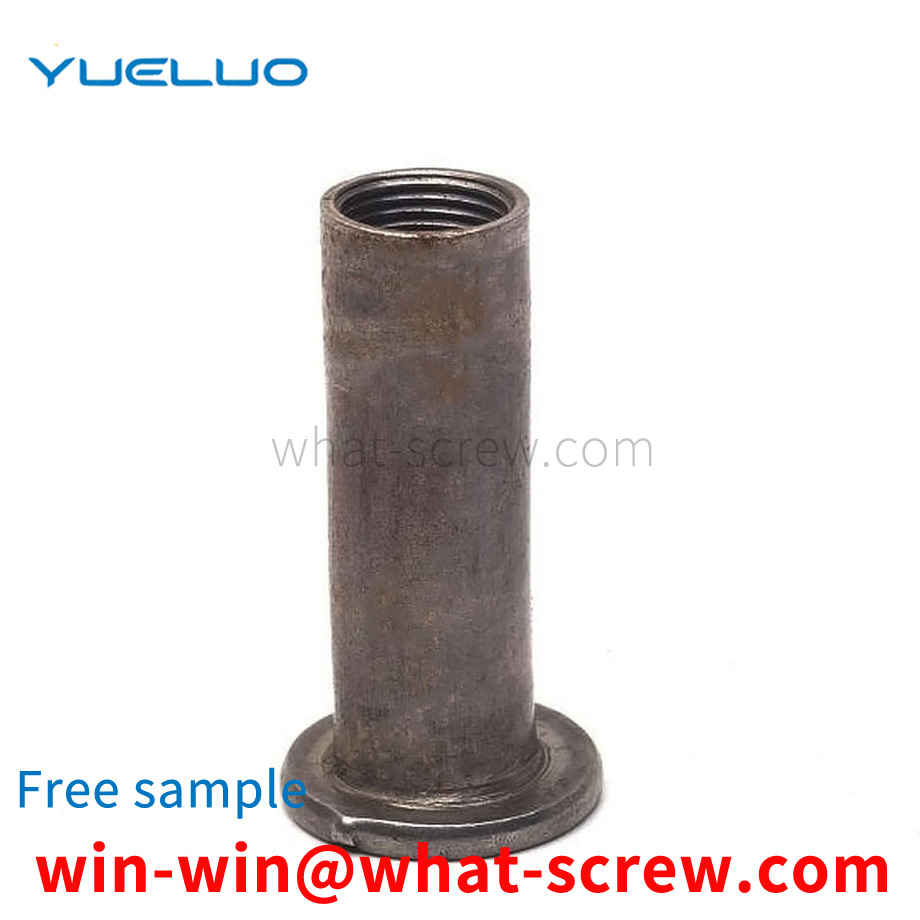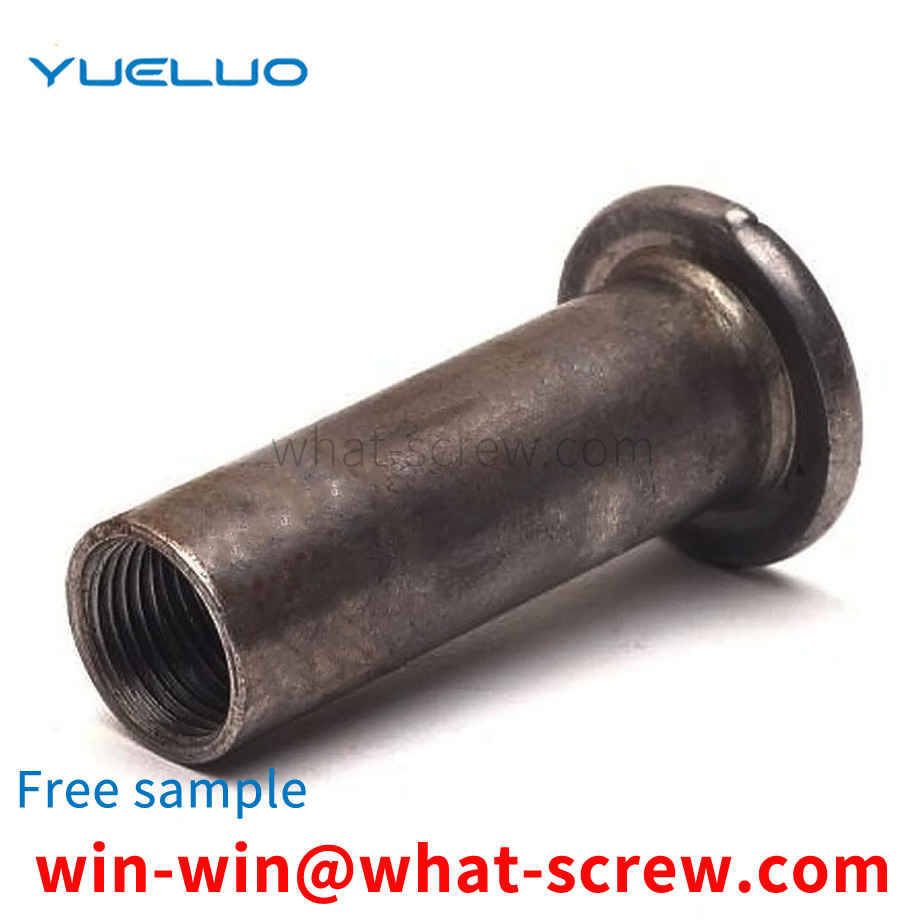Usually, a tight fit is used between the cylindrical pin and the pin hole, such as the cooperation between the cylindrical pin and the pin hole on the rotating shaft of the motor. Due to the tight fitting structure between the cylindrical pin and the pin hole, the shaft with the pin hole needs to be well positioned during assembly, and then the cylindrical pin is aligned with the pin hole, and then knocked or pressed to fit. The cylindrical pin is pressed into the pin hole. There is no device specially used for the installation of cylindrical pins in the prior art, and two or more people are required to cooperate to install the cylindrical pins into the pin holes. installation quality.
At present, with the development of my country's railway industry, many railway fastener systems involve T-bolts. The structure is shown in Figure 1. The dimensions that need to be inspected are head width A, head length B, and head straight table height. C. The height of the head slope D, the total length of the bolt E, and the major diameter of the bolt F. Due to the irregular shape of these places to be inspected, the measurement is difficult. The measurement of general measuring tools is not only slow, but also difficult to control human errors, resulting in some extreme upper limits and There are disputes and misjudgments about the size of the extreme lower limit when judging qualified and unqualified.
The flat key transmits torque on the side, has good neutrality, is easy to assemble and disassemble, and cannot realize the axial fixation of the parts on the shaft. Ordinary flat key: Type A, Type B, Type C, Type A is used for shaft grooves machined by end mills. The key is well fixed axially in the groove, but the stress concentration caused by the groove on the shaft is large; Type B is used for disc milling cutters. The machined shaft groove, the stress concentration of the shaft is small; the C type is used for the shaft end; it is suitable for high-speed, high-precision or occasions under variable load and impact, such as fixing gears, sprockets and other rotating parts on the shaft. Guided flat key: The key is fixed on the shaft with a screw, the key and the hub groove are in dynamic fit, and the parts on the shaft can move axially. For the convenience of starting the key, there is a key-starting screw hole. Use the occasions where the axial movement of the parts on the shaft is not large, such as the slip gear in the gearbox. Feather key: The key is fixed on the axle, and the parts on the shaft can move axially with the key; it is used in the occasions where the axial movement of the parts on the shaft is large;
The process factors that affect the quality of high-strength fasteners include steel design, spheroidizing annealing, peeling and dephosphorization, drawing, cold heading, thread processing, heat treatment, etc., and sometimes the superposition of various factors.
Hex cap screw and Hex bolt Hex bolt As the name suggests, it is a male threaded fastener with a hexagonal head, designed to be turned with a wrench. According to the ASME B18.2.1 standard, the head height and shank length tolerance of the hexagon head screw (Hex cap screw) is smaller than that of the general large hexagon bolt (Hex bolt), so ASME B18.2.1 hexagon screw is suitable for installation in all hexagon bolts that can be used. places, also including places where the large hex bolts are too large to be used. The screw head of the hexagon socket screw is round on the outside, and the middle is a concave hexagon, and the hexagon screw is the kind of common hexagonal screw head. The hexagon socket head screwdriver looks like a '7'. Cut two sections of a hexagonal steel bar and bend it at 90 degrees to form a hexagon socket head screw wrench, which is sold in hardware tool stores. Hexagon socket screwdrivers are not so-called mobile phone special screwdrivers. Mobile phone special screwdrivers can be bought at the booths that sell repair tools in the electronics market. Hexagon socket head cap screws are often used in machinery, mainly because they are easy to fasten, disassemble, and not easy to slip. The Allen wrench is generally a 90° bend. One end of the bend is long and one side is short. When using the short side to drive screws, holding the long side can save a lot of force and tighten the screws better. The long end has a round head (a hexagonal cylinder is similar to a sphere) and a flat head. The round head can be easily slanted and disassembled, and some parts that are inconvenient to lower the wrench can be installed. The manufacturing cost of the outer hexagon is much lower than that of the inner hexagon. Its advantages are that the screw head (the force position of the wrench) is thinner than the inner hexagon, and some places cannot be replaced by the inner hexagon. In addition, machines with low cost, low power strength and low precision requirements use much less hexagon socket screws than external hexagon screws. [1] Socket cap screw, also known as socket head screw or Allen bolt, is a screw with a hexagonal inner hole on the head, with a hexagonal ruler (hex key, Allen wrench or Allen key) Tighten or loosen only after inserting into the inner hole. The most commonly used hexagon socket head screws are cylindrical head screws with a head diameter of about 1.5 times the main diameter of the thread (1960 series). Countersunk head cap screw. The countersunk hole design allows the screw head to be rotated without being exposed on the surface of the fixed object, so it is mostly used in places where the surface is small and it is inconvenient for traditional wrenches to use.
We have many years of experience in the production and sales of screws, nuts, flat washers, etc. The main products are: multi-tooth cushions, I-shaped flat washers for bad steel, aluminum alloy handle caps, screw nuts, combination screws and other products, we can provide you with The right fastener solution for you.



















 Service Hotline
Service Hotline




